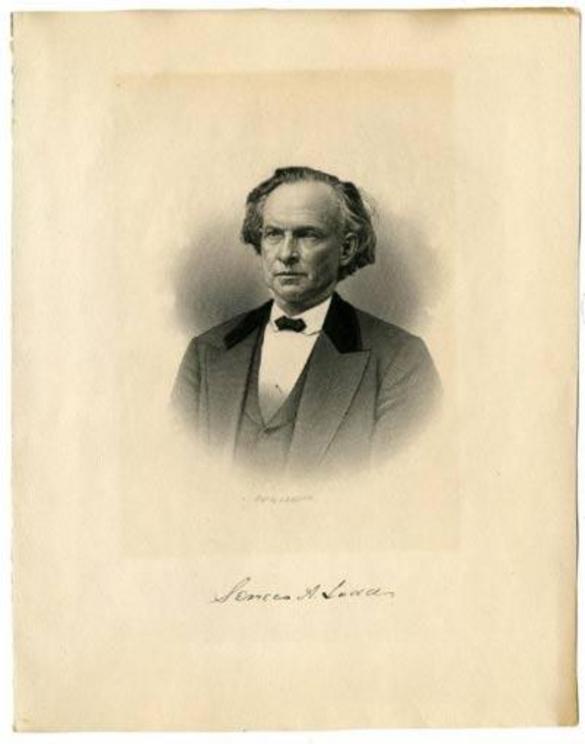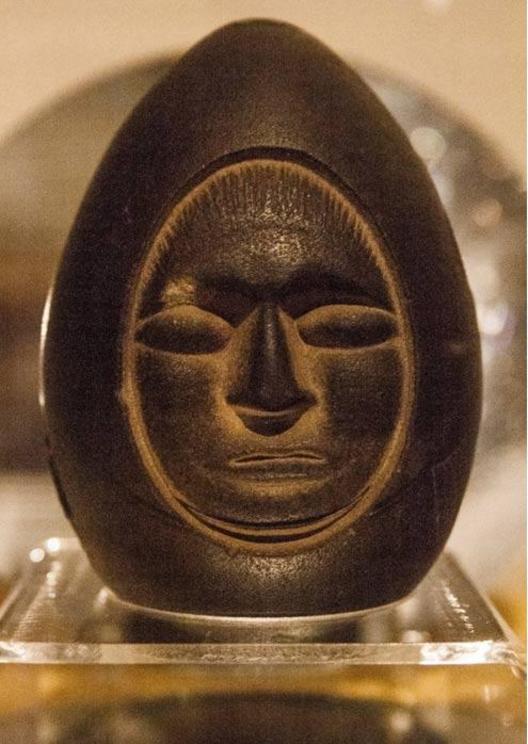Out of Place Artifact: The mysterious stone egg of Lake Winnipesaukee
In 1872, construction workers digging a hole for a fence post near the shores of Lake Winnipesaukee in New England found a lump of clay with an egg shaped artifact inside it, six feet below the ground. Called the ‘Mystery Stone’, it is one of New Hampshire's more curious and lesser known relics . Amateur and professional archaeologists have speculated about the origin of this strange artifact for well over one hundred years with no clear answers emerging.
The rock type is not familiar to New Hampshire and there are no other known objects bearing similar markings or design in the United States. It may very well have been the work of someone living in a faraway place and time, as nothing like its fine workmanship has been produced by the Native American tribes living locally in the area.

Panoramic view of Lake Winnipesaukee, New Hampshire. (Melikamp/ CC BY SA 3.0 )
Strange Symbols on the Lake Winnipesaukee Mystery Stone
The mystery stone egg is approximately 4 inches (10.2cms) long, 2 1/2 inches (6.4cms) thick, weights eighteen ounces (510.3grams), and has a dark-hue to it. Hard as granite, it is about the size and shape of a goose egg. The stone is a type of quartzite, derived from sandstone, or mylonite, a fine-grained rock formed by the transference of rock layers along faults. There are holes bored in both ends of the stone and it was drilled through from end to end with different sized tools, and polished along its surface.
Beyond its strange construction and design, the stone is marked with bizarre carvings ranging from astronomical symbols to a human face along its smooth sides. On one side, there are what appears to be inverted arrows, a moon with some dots, and a spiral. Another side has an ear of corn with 17 kernels in the row.
Underneath, there is a circle with three figures; one of which looks like a deer's leg, along with some kind of animal with large ears. The “third” side shows a tepee with four poles, an oval, and a human face. The face is sunken with a nose that does not rise above the surface of the egg and lips that seem to give the image some kind of purposeful expression.

Details of carvings on two of the sides of the Mystery Stone. ( Noahsage)
History of the Lake Winnipesaukee Stone Egg
It was Seneca A. Ladd, a local businessman, who hired the workers to dig the fence post that is credited with the discovery of this intriguing artifact. When it was first unveiled to the world, the American Naturalist journal described it as “a remarkable Indian relic.”
Documents and newspaper articles show that by 1872 Seneca Ladd had the “egg” in his possession and by 1885, it was notable enough to be reported in the county history book. Ladd died in 1892, and in 1927, one of his daughters, Frances Ladd Coe of Center Harbor, donated the stone to the New Hampshire Historical Society in the state capital of Concord.
There it was separated from the Native American 1800’s-era cultural artifacts and items of modern day interest.

Seneca A. Ladd. ( Cowhampshire)
Controversial Theories on the Origin of the Strange Stone Egg
As for its purpose, there have been attempts made by historians over the years to come up with an explanation for the stone with no clear answer to date. Initial interpretations began with the simplest answer.
In November of 1872, The American Naturalist suggested that the stone "commemorates a treaty between two tribes.” However, this idea did not hold up long and it was later hypothesized that the stone was some kind of ancient tool .
There have also been suggestions that the egg could be Celtic or Inuit in origin and in 1931 a letter was written to the New Hampshire Historical Society suggesting that it was a “ thunderstone.” Also known as "thunderbolts" or "thunder axes," a thunderstone is a worked stone object, often wedge-shaped like an axe blade, that is alleged to have fallen from the sky.
Stories of thunderstones are found in cultures all over the world and are often associated with a thunder god. The writer went on to say that such objects “always present the appearance of having been machine or hand-worked: frequently they come from deep in the earth, embedded in lumps of clay, or even surrounded by solid rock or coral.”
Is the Mystery Stone a Native American “Birth Stone?”
Indigenous historian Joe Graveline suggested an interesting purpose for the Mystery Stone – he told Greenfield Recorder in 2018 that he believes it was a Native American birth stone. According to the Greenfield Recorder, a birth stone is “a stone that was heated and internally placed inside the pregnant woman by midwives to relax muscles during difficult births.”
Graveline says this particular stone would have been extra special and used by a Native American midwife to help a mother “deliver a person who became a venerated spiritual or governmental leader of either sex.” He also believes that it was a grave offering and if the construction workers had dug a little deeper they would have encountered bones.
https://youtu.be/emg4F-Wio38
The Perfectly Drilled Holes
One particularly interesting detail about the Mystery Stone’s construction worth noting are the two holes bored in both ends of the stone with different size bits. Each bore is straight, not tapered. Scratches in the lower bore suggest it was placed on a metal shaft and removed several times, according to one analysis done by New Hampshire state officials in 1994. Richard Boisvert, a state archaeologist, believes these holes are highly regular:
“I've seen a number of holes bored in stone with technology that you would associate with prehistoric North America. There’s a certain amount of unevenness and this hole was extremely regular throughout. What we did not see was variations that would be consistent with something that was several hundred years old.”
Boisvert, who deeply laments the lack of details on the context in which the stone was found, went on to suggest that the holes were drilled using power tools rather than traditional techniques used by Native Americans. He added that there was every chance the holes were made during the 19th century, which would mean tampering of the object. This has led some to believe the Winnipesaukee’s stone mystery is simply some kind of elaborate hoax.

The face on the Lake Winnipesaukee Mystery Stone, New Hampshire, USA. ( Noahsage)
The only thing that seems certain, or of which there is consensus, is that it was created using some type of machine . However, the fact remains that no one knows who made the object, when or why.
At one time the Mystery Stone attracted the wonder of the scientific world, with the Smithsonian Institution in Washington D.C. offering to send a map to Seneca A. Ladd to make a casting of the egg.
Today, the Lake Winnipesaukee Mystery Stone is on display in a case at the Museum of New Hampshire History, surrounded by mirrors to show off its unique and enigmatic features.
Top Image: The three faces of the Lake Winnipesaukee Mystery Stone, New Hampshire, USA. Source: Disclose.tv
https://nexusnewsfeed.com/article/ancient-origins/out-of-place-artifact-the-mysterious-stone-egg-of-lake-winnipesaukee
Thanks to: https://nexusnewsfeed.com






 Sat Mar 23, 2024 11:33 pm by globalturbo
Sat Mar 23, 2024 11:33 pm by globalturbo

